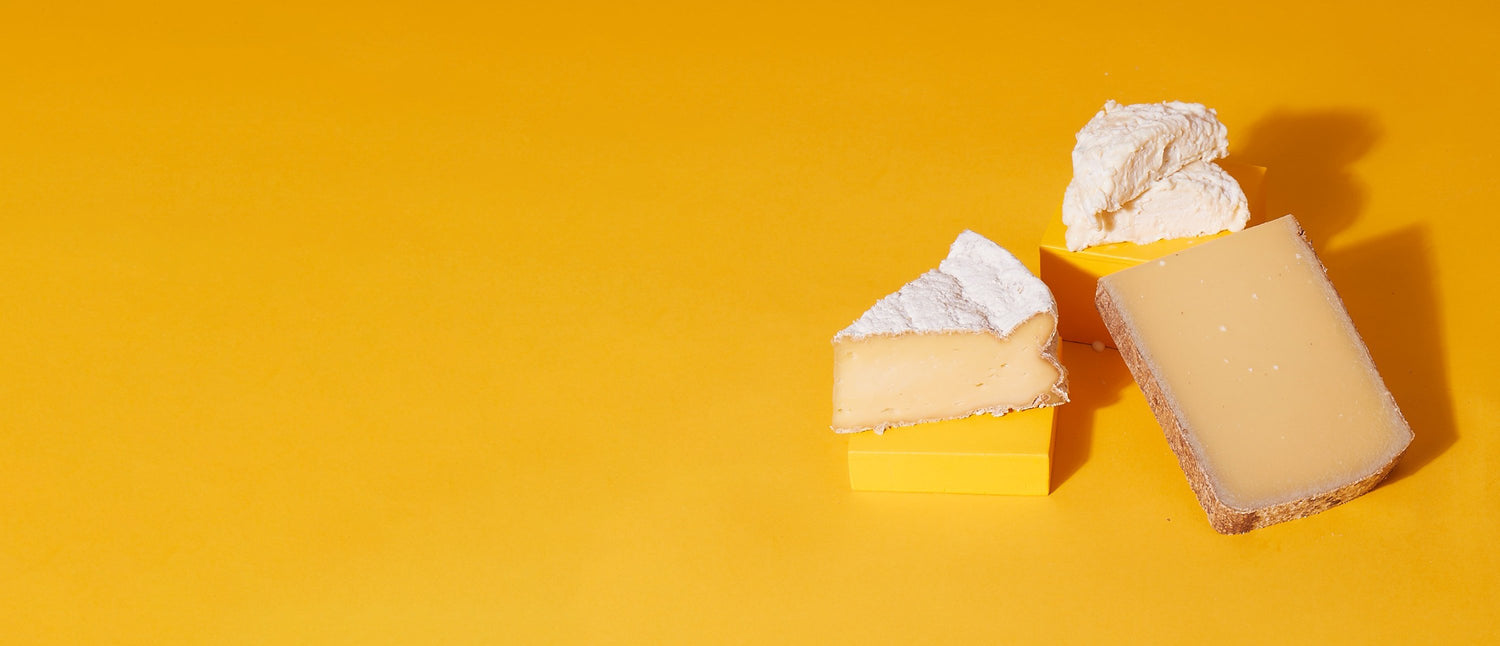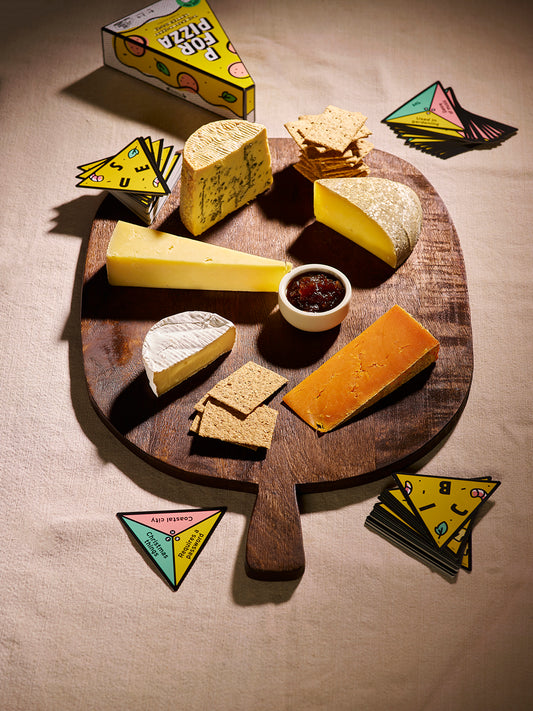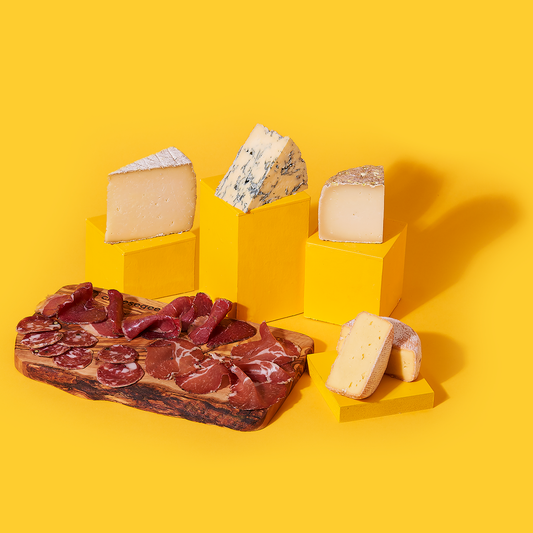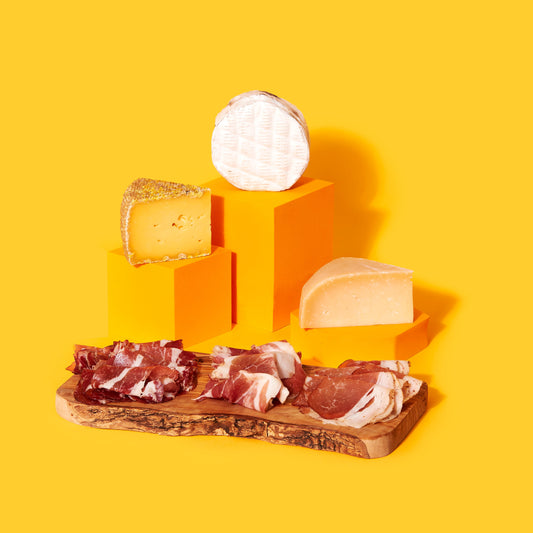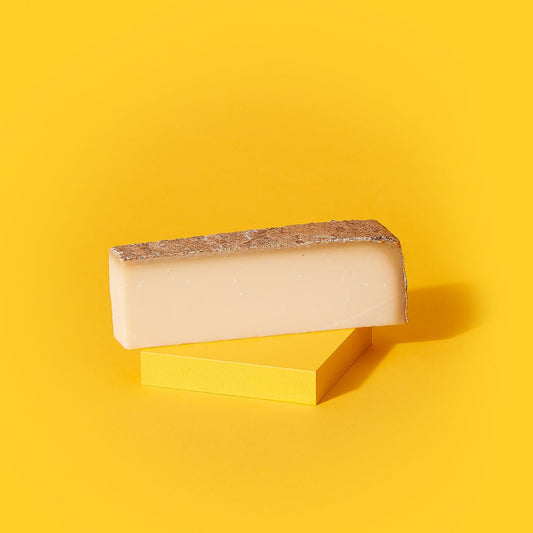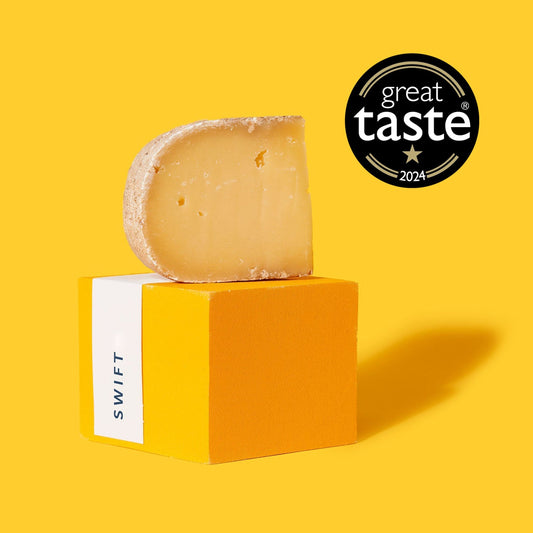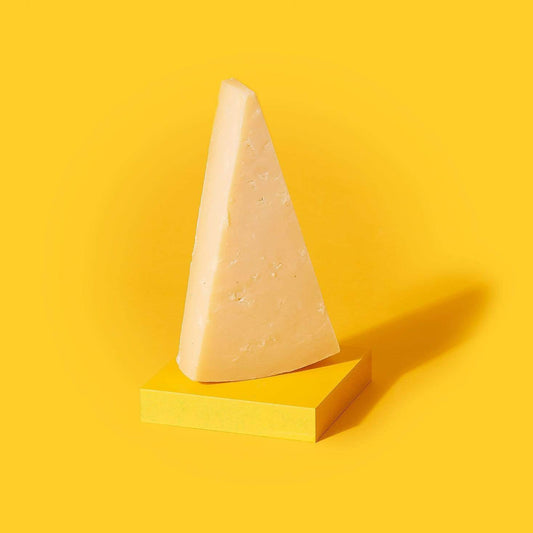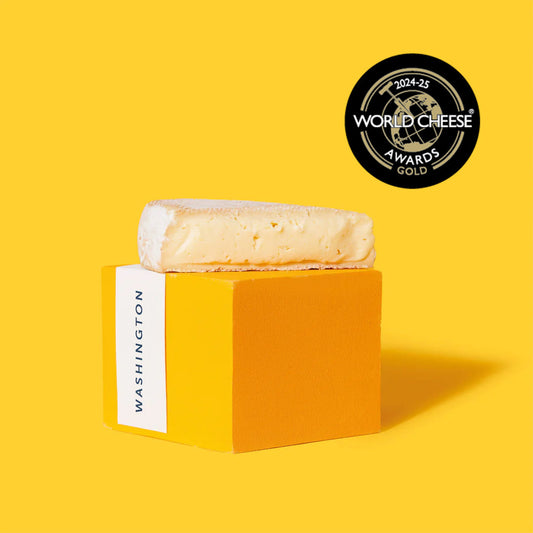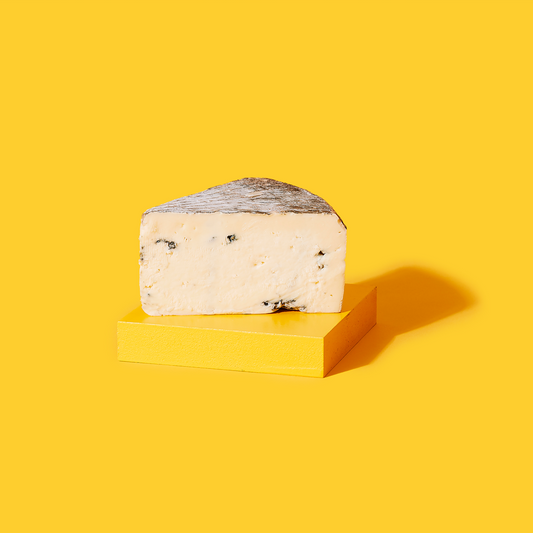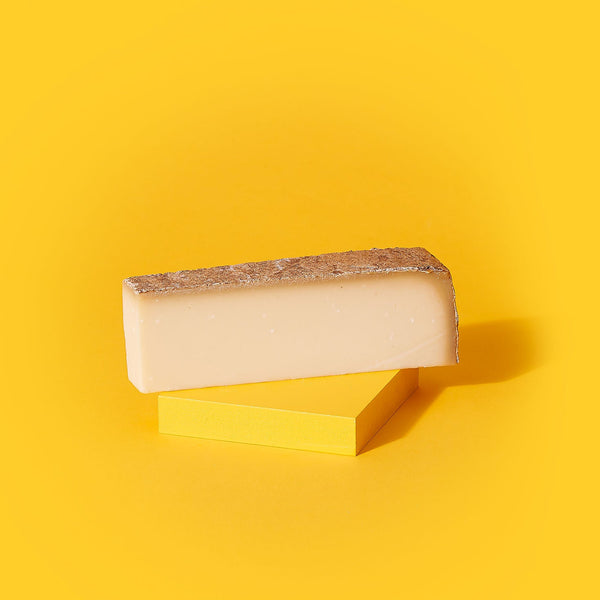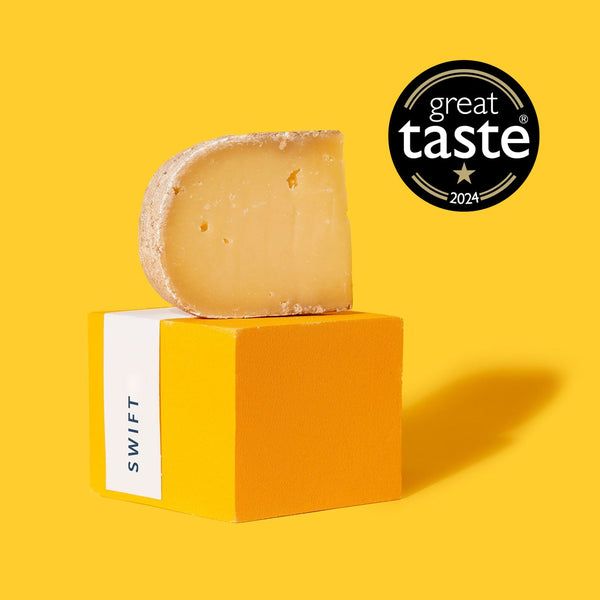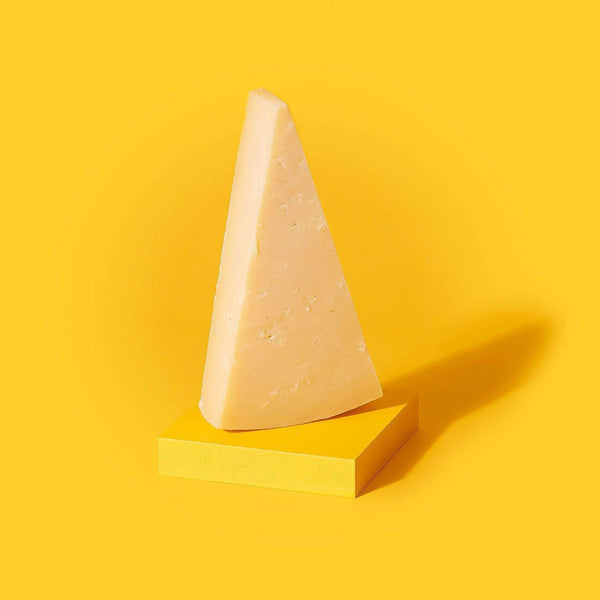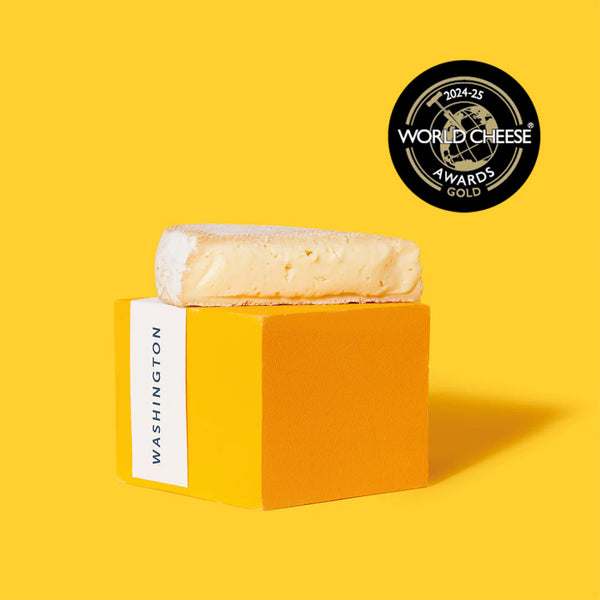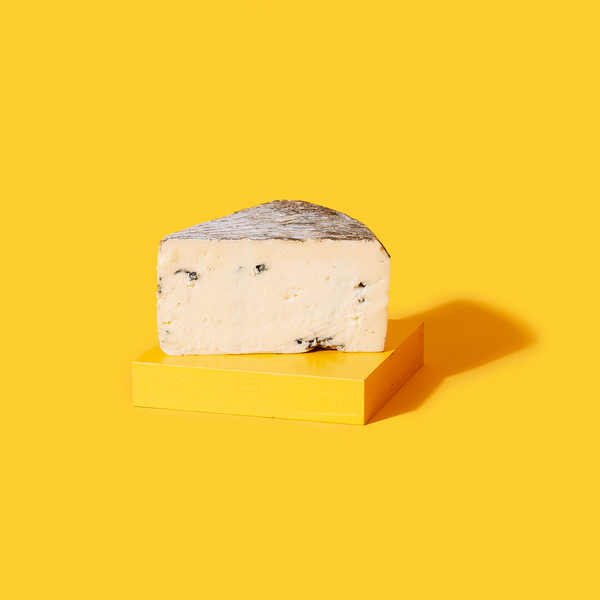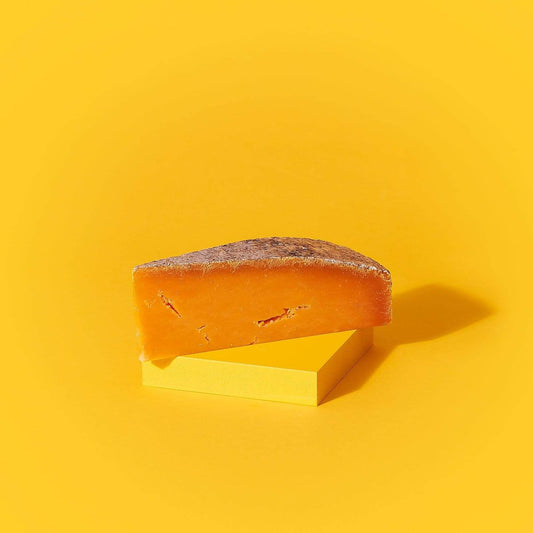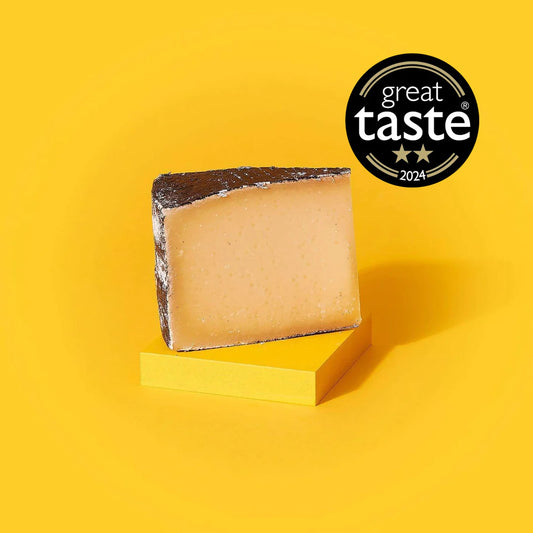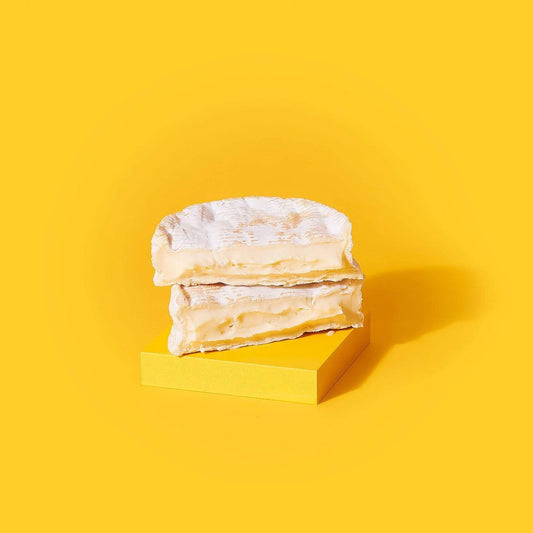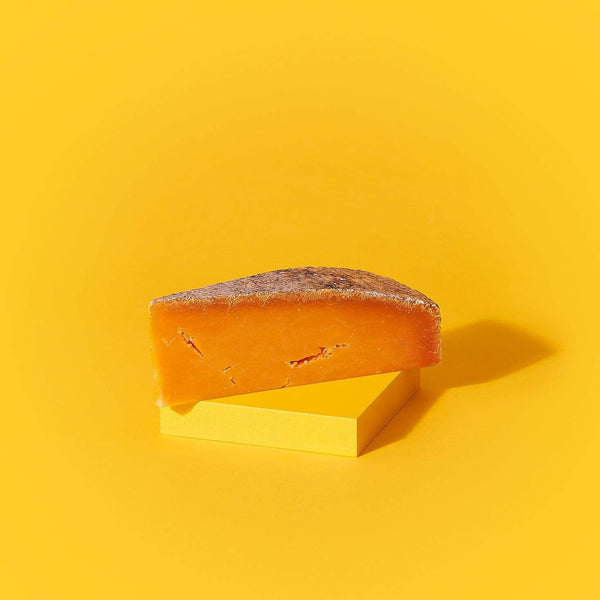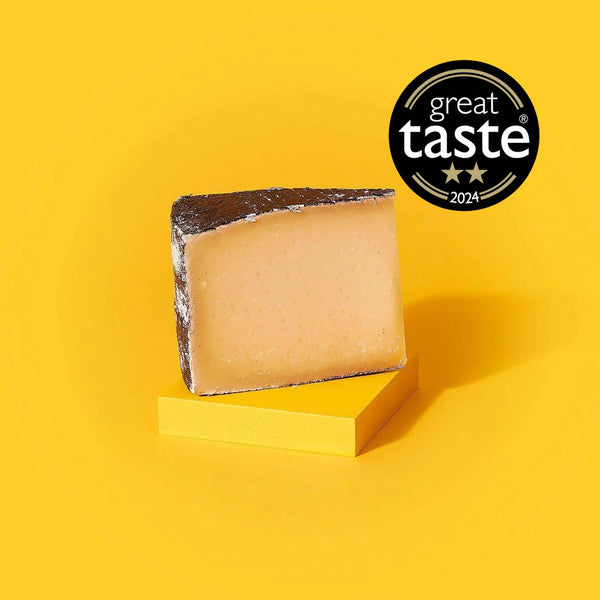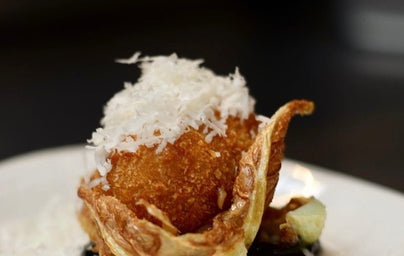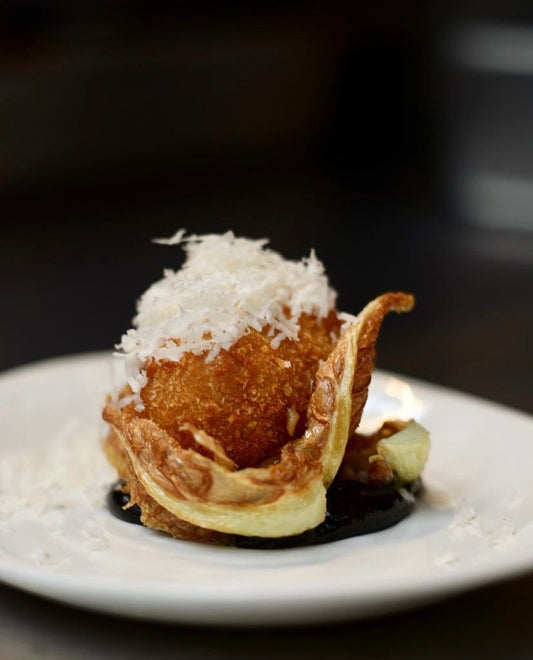Share
Early winter/Christmas
Stilton
The ultimate Christmas cheese, traditionally eaten at this time of the year due to seasonality. The milk is taken in September, when the cows have been eating the ‘second growth’ summer grass. This grass lends itself wonderfully to cheesemaking, and they have been on grass all summer, so their digestion is fully adjusted to this diet.
Stilton is then aged for around 11-13 weeks, which takes you just about precisely to Christmas Day!
Moreton
A British cheese made in the style of a French Tomme, this cheese would traditionally have been made by farmers with the excess milk yields during the summer. In other words, their cows, feeding on grass, were producing too much milk to consume fresh, so it was made into cheese to preserve it. This cheese could then be enjoyed over the winter months when the milk yields fell.
As such, it is a very traditional winter cheese, aged for around 3-4 months and just lovely around this time of year.
Comte
Not a British cheese of course, but a world famous French cheese one that is just about perfect at this time of year. Comte made with summer milk is on a different level from winter milk Comte. It carries a rich golden colour (vs ivory white for winter milk) and bursts with flavour. I think Comte is best aged around 18-20mths, so the sweetspot for age and mid-summer milk falls right around Christmas time.
Baron Bigod
Catching the very last of the grass-fed cows milk before they come in for the winter, Baron Bigod is so perfectly rich, decadent and complex at this time of the year. The Bigod minis ripen for around 7 weeks and the 1kg around 10 weeks, meaning the milk is from October.
Mid-winter
Vacherin
Perceived as a Christmas cheese, possibly the MOST famous seasonal Christmas cheese, I actually prefer Vacherin in January.
Only available between August and April, when the Montbeliarde cows are down from their summer alpine pastures, the milk used to make Comte in the summer months (huge yield, huge cheeses) makes the soft, rich, unctuous Vacherin instead (lower yields, higher fat content).
The early season cheeses are light and zingy, more like crème fraiche. But as the season progresses, and the cows spend longer and longer on hay (higher carb content) and their milk gets fattier and richer, the cheese becomes funkier, farmier and way more complex.
Rollright
If you are after a British version of Vacherin, then look no further than Rollright. Also wrapped in spruce, which imparts a sweet, woody, funky flavour to the cheese, it mirrors the development of Vacherin, building a stronger more complex flavour profile as the winter progresses, and getting a quicker breakdown meaning you get maximum ooze.
Stichelton
Stichelton is a raw milk cheese made in the style of Stilton. Other than being pasteurised, the only other significant difference between this cheese and Stilton is that it is aged slightly longer. This means that to capture the best of the milk, that September yield, Stichelton tends to come into its own a few weeks later.
Late winter
St James
The new year, Spring around the corner, and it is the first batch of new St James. Another truly seasonal cheese, only available from around February – October, it is a sheep’s milk cheese made by Martin Gott in Cumbria. Truly artisan and small-scale, Martin uses his own starter cultures to make this cheese (almost unheard of as 99% of cultures are bought in).
Early season St James is delightful – light, lactic and elegant. As the season progresses, it becomes more and more complex and challenging, developing meaty, umami and even shellfish flavours.
Crozier Blue
Another sheep’s milk cheese, Crozier blue is aged far longer than most blue cheeses, for up to 6 months. This is therefore cheese made from late summer the previous year and it is so worth the wait. Melt in the mouth, creamy, slightly sweet and with the unmistakable blue salty tang.
Kirkham’s Lancashire
Finally, Kirkham’s Lancashire, the last remaining raw milk farmhouse Lancashire being made in the world. It is an absolute stonker, aged for a good 4-6 months, again it represents the late Summer milk from the previous year at this time. Rich, buttery and with a lardy horseradish bite from the rind. But the texture is what really sets Kirkham’s apart – similar to the base of a cheesecake. The perfect cheese to see out the last throes of winter.

